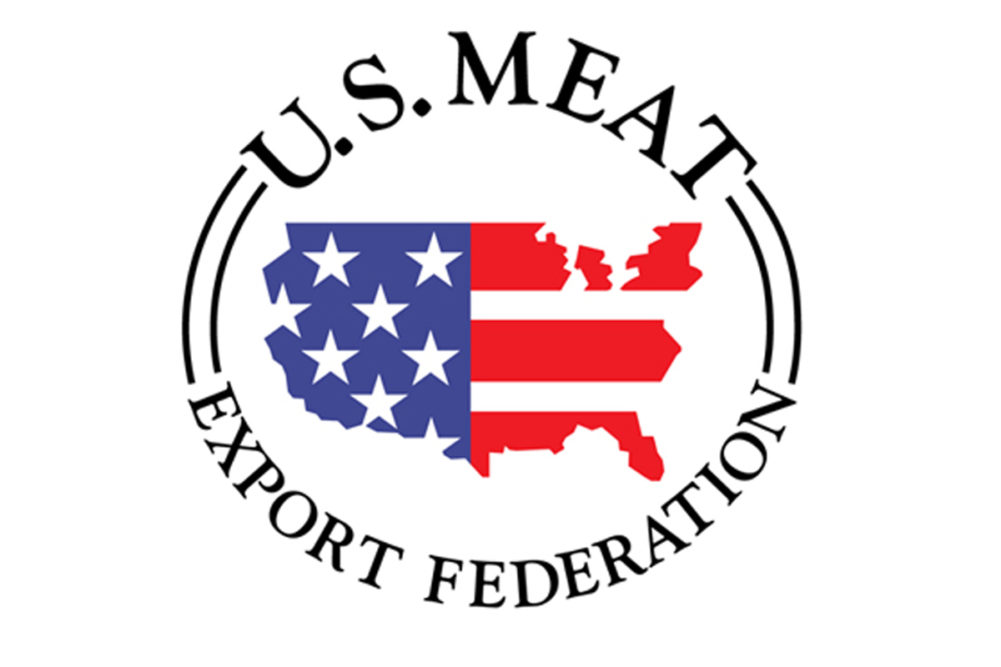DENVER — The US Meat Export Federation (USMEF) met in San Antonio, Texas, for its spring conference to address issues facing US exporters and to update members on promotional activities for pork, beef and lamb in international markets. The conference took place from May 25-27.
The event commenced Wednesday with opening presentations from USMEF President and Chief Executive Officer Dan Halstrom and keynote speaker Peter Zeihan, author and geopolitical analyst.
Halstrom gave an overview of first-quarter red meat export results.
“To date, demand for US red meat has been as strong as I’ve ever seen in all my years in the meat business, and remarkably resilient,” he said. “But the question in my mind is, at what point do these inflationary pressures start to constrict disposable income for the global consumer? At what point will we see a crack in demand?”
Thursday’s general session focused on agricultural trade relations between the United States and China, particularly the impacts of the 2020 Phase One Trade and Economic Agreement.
Thursday’s guest panelist Terry Branstad, former Iowa governor, witnessed negotiations leading to the agreement while serving as US ambassador to China under the Trump administration. Joining him was Joel Haggard, USMEF senior vice president for the Asia Pacific.
Soon after the Phase One Agreement, Chinese purchases of US agricultural products reached record levels although they fell short of the targets outlined in the agreement.
Haggard said US producers should not be overly concerned that the Phase One purchase targets were not reached.
“Would we in the meat sector have wanted Chinese state purchasers to go out and buy products just for the purpose of buying them, and disrupt the market?” Haggard asked. “That doesn’t serve orderly development of the market.”
Branstad noted, two years following the agreement, Chinese consumers remain committed to US food products because they value the quality and safety.
China is now the third largest destination for US beef exports, trailing only South Korea and Japan, for which Haggard praises the Phase One Agreement. He also partially attributes the agreement to the surge in US pork exports to China in 2020. The other major factor being African swine fever’s impact on China’s domestic hog production.
Branstad is skeptical of Phase Two negotiations to come.
“That’s going to be the hardest part because the Chinese government loves to subsidize their state-owned enterprises,” he said. “That’s market-distorting and it’s something we wanted to address, and frankly that’s what didn’t get done in the Phase One agreement. I think it will be difficult to do, and the Biden administration hasn’t really shown any appetite for going after it.”
The event’s closing session featured a panel discussion focused on USMEF marketing initiatives in traditional retail venues in selected markets. Jessica Spreitzer, USMEF’s director of trade analysis, moderated the panel discussion, featuring Lorenzo Elizalde, USMEF director of marketing in Mexico, Dave Rentoria, USMEF Philippines representative, and Maria Ruiz, USMEF Colombia representative. Each representative spoke on the state of the meat market in their country and strategic promotions being used to increase sales.
Spreitzer acknowledged that the pandemic had accelerated the global shift in food sales toward modern retail but emphasized that traditional venues continue to hold their own in the increasingly competitive retail space. She noted that these markets still dominate sales in many countries in Southeast Asia and Latin America.
USMEF members will next meet at the organization’s annual strategic planning conference, which is scheduled for Nov. 9-11 in Oklahoma City.



